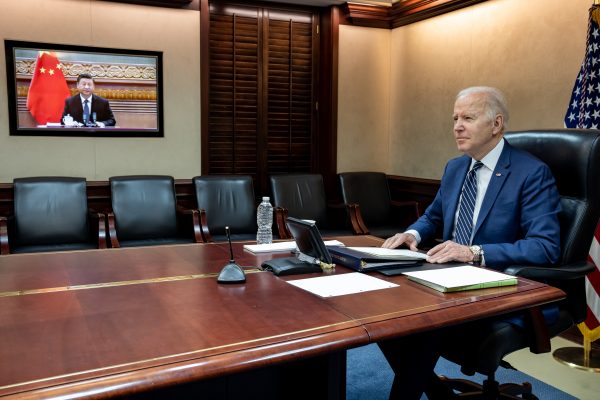While the Biden administration recognises the urgency of an affirmative economic strategy in the region, its approach reflects US political constraints. It is unclear where the Republican Party stands following its turn away from free trade since 2016. The Biden administration also seems determined to bring labour unions along with new trade initiatives, so it is avoiding the agreement becoming a treaty in need of congressional approval. It hopes instead to conclude an Executive Agreement by the end of 2023 when the United States will host APEC and before the US presidential election heats up.
The IPEF will not produce a traditional free trade agreement (FTA). More importantly, it will not provide improved market access through tariff elimination, a key reason why countries sign FTAs with the United States. Washington is instead proposing four IPEF pillars.
The first is fair and resilient trade rules in areas like digital trade, labour and the environment. The second is supply chain resilience. The third is infrastructure and green technology. The fourth is tax and anti-corruption. While the United States will encourage countries to participate in all four pillars, they may participate in IPEF if they join at least one.
A key challenge for Washington will be convincing other countries to accept high-standard and binding trade rules without receiving market access. As in previous trade agreements, the United States will most likely seek high labour standards, but the significant TPP labour market reforms to which Vietnam, for example, agreed were made politically possible by the promise of greater US market access.
Washington will also be making demands against a backdrop of uncertainty over whether the next president will seek to pull the United States out of the IPEF — a feat that is easier to achieve with an Executive Agreement rather than a Senate ratified treaty.
If the United States can address these challenges, the initiative may deliver significant economic gains for COVID-19 recovery, digital transformation and environmental transition — all areas of priority for Washington and its partners. Digital trade commitments that facilitate trusted data flows should promote digital trade and business among IPEF members. The IPEF might also provide enhanced investment in more resilient and secure supply chains, as well as infrastructure, clean energy and capacity building.
The United States–Mexico–Canada Agreement (USMCA) provides a useful insight into the potential gains from an agreement on new rules. The USMCA was a renegotiation of NAFTA, under which tariffs were already zero, making it primarily about new trade rules in areas such as digital trade and labour regulations. According to the United States International Trade Commission, the USMCA will increase exports to Canada and Mexico by 5.9 and 6.7 per cent, respectively. A big part of these projected economic gains come from the trade policy certainty gained from USMCA rules in areas such as digital trade.
The IPEF is an opportunity to build on the bipartisan support for the USMCA — the first large free trade agreement backed by the AFL–CIO labour union, which passed the US Senate 89-10 in 2020, compared to the 60-38 vote in favour of NAFTA in 1993. The agreement’s enhanced and binding labour and environmental provisions, a rollback on access by investors to arbitral tribunals and tighter rules of origin all made the political coalition possible.
The IPEF will not require congressional approval, but the USMCA will still inform the administration’s approach because bipartisan political support is needed to reduce the political risk that a future administration pulls out. The agreement’s role as a geostrategic counter to China should also enhance its appeal.
This leads to membership. The United States could broadly invite Indo-Pacific governments into the IPEF as a show of US support and engagement. But the challenge of negotiating meaningful commitments with a large number of countries, and the US imperative to complete an IPEF agreement in 2023, points towards a more limited set of initial participants. This would likely include governments supportive of free trade like Australia, New Zealand, Singapore, Japan, South Korea, as well as key ASEAN countries such as Vietnam, Malaysia and Indonesia.
India should also be invited to join the IPEF. The strategic rationale is clear — the very notion of an Indo-Pacific is hollow without Indian participation. While India is typically protectionist when it comes to trade, the IPEF does not make any demands to lower tariffs. The IPEF also comes at a time when India has clarified its strategic concerns with respect to China. Increasing China–Russia alignment may also lead India to seek even closer relations with the United States.
The IPEF is an opportunity to promote US leadership and deepen US ties with Indo-Pacific countries at a critical geopolitical moment. While pursuing an economic agreement is domestically controversial, the importance of the IPEF is clear. The challenge will be finding a path to achieve a high-standard IPEF agreement, consistent with US domestic constraints, while providing sufficient benefits to attract US Indo-Pacific partners.
Joshua P Meltzer is a Senior Fellow in the Global Economy and Development program at the Brookings Institution. He is also a member of the Australian National Data Advisory Council and a Senior Fellow at the Melbourne Law School, the University of Melbourne.


The proposed IPEF is a reactive rather than a proactive initiative, a US response to CPTPP and RCEP, of which it is not a participant. US has got to be there and assumes leadership role; it doesn’t matter what. It appears to be a more political rather than economic framework, aiming to pull in Asian countries to reinforce its 5Eyes, QUAD four, AUKUS three collectives, with the sole mission of containing and isolating China. No different from US BBB to counter China’s BRI. Earlier when China set up AIIB, to complement World Bank and IMF, Obama did everything to kill it.